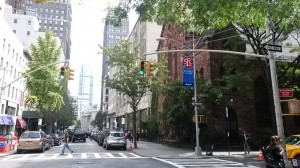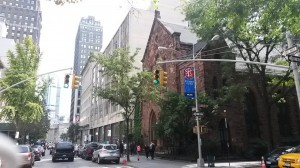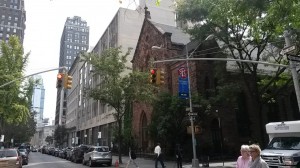Have you ever thought about stopping and looking what’s surrounding you now than what it was long time ago? Time is the key to life, and everything changes because of it, and with just a blink of an eye, the world is not the same anymore. New York City is known as the city that never sleeps, but, things changed dramatically, and when we look at a certain thing, you try to remember what was there before. The “Old” New York was the famous New York many people knew. Buildings were so modern, horses were “taxis”, and picture taking was in black and white. All those things that “Old” New York had is still remembered today when you see the change. So, when I stood in a certain place that I enjoy going, I see the juxtaposition of the “Old” New York, and the “New” New York.
To begin with, I didn’t really think about how New York City was before. You are so use to seeing what there is now, but you do get to remember what was there before things changed. In your neighborhood, you could see that things aren’t the same when time has been passing by, for example the Burger King that you see across the street was a car shop, or the Chase Bank that you go now to deposit money was a junk yard. Where I go, I call it “my” New York, because is a place where now is a park and is just so beautiful because you see both The Brooklyn Bridge, and The Manhattan Bridge. Many people know this place, its called “The Brooklyn Bridge Park”, also know as DUMBO, and it’s a very famous tourist place. When you look at certain things, you see new things, and I saw a lot of new things that were something else long ago. While I was walking, between Water St and Old Fulton St, I saw railroad tracks, all rusty and a good percent was covered with cement and bridge legs. From that moment, I saw my juxtaposition of “Old” and “New” New York.
Furthermore, I took pictures of these railroads, and I was imagining how beautiful it was to have a train go by here, and under these bridges. When you come across these railroads, you already know that “Old” New York was here, and in my own personal opinion, I wish that the train that passed by here years ago , could have passed by here today. “New” New York, is just cement, with a brick like look, but it’s not the same, and the streets are bumpy and narrow in some ways. One of the Bridge Legs sits on these cements, but not on the railroads, but you could see that trains passed by it. When I saw these railroads, I felt the sound of it, and the feeling of the wind. The noises you hear when a train passes, is just so noisy, fast, and sometimes could be annoying. Now, you don’t hear that noise, all you hear is people, footsteps, wind, and sometimes even silence at night. So, I am not the only one that talks about “Old” New York and how things changed overtime.
Moreover, an author named, Calson Whitehead, has his New York. He wrote a book called,” The Colossus of New York,” and I read a part of ” City Limits”, which describes a little about his New York and juxtaposition of old and new. He tries to give a message to New Yorkers that has remembered how “Old” New York was and how it is today. After reading a part of his book, I started to look more about New York City, and seeing the aesthetic point of views I had, and what he had. “Go back to your old haunts in your old neighborhoods and what do you find, they remain and have disappeared”( Colson Whitehead, City Limits). One of my favorite sayings of Whitehead and it’s what I do sometimes when i cross by something new. It’s a fact that when you go back, you don’t see what you saw before. Like I said before, time is so magical, and “Old” New York was just so unique and ordinary, and now “New” New York, is more modernized and more technology than ever. Need a cab? They are everywhere, you wont miss one, but in the old times, horses was your way back home. So, as you can see, “Old” New York is remembered, and now “New” New York is the big deal.
In addition, when you think about New York City, you obviously talk about the big buildings, the lights, the music, the stores and so on. What is my concern is that I never got to say goodbye to what I saw before. I am not the only one, many people haven’t, as well as Colson Whitehead. DUMBO, is “my” New York, but not the New York that we see today, I want to see that train that goes by Water St, and Old Fulton St, I want to feel the wind, hear the noise. I want to experience that feeling of that train being there, the people in it, how different it would be. Colson Witehead wrote, “ We can never make proper goodbyes. It was your last ride in a Checker cab and you had no warning” (Colson Whitehead, City Limits). He was referring to that one last time you saw your favorite place, and now your thought you would see it again, but it disappeared. Today, New York City is different than ever, and we will never forget how it became this way. Mankind made change happen, and of course time. “New” New York has become the famous city that people around the world come to visit. If you look to other states or other countries, New York City will bet that is more extraordinary than them.
In conclusion, “old” New York will be seen everyday, because “new” New York is still old, but it has changed to be more modernize if you see closely. Goodbye to the things we saw long ago, or wished we did, and hello to new possibilities. “My” New York will always be there, and I will go by those railroads, because its not going anywhere, its still there, just covered up. If you had the chance to go back through time, maybe a take pic, and see the difference. Of course thats not possible, but both old and new is still there, we are literally looking at it and stepping on it.
Works Cited :
Whitehead, Colson. “City Limits.” From The Colossus Of New York





